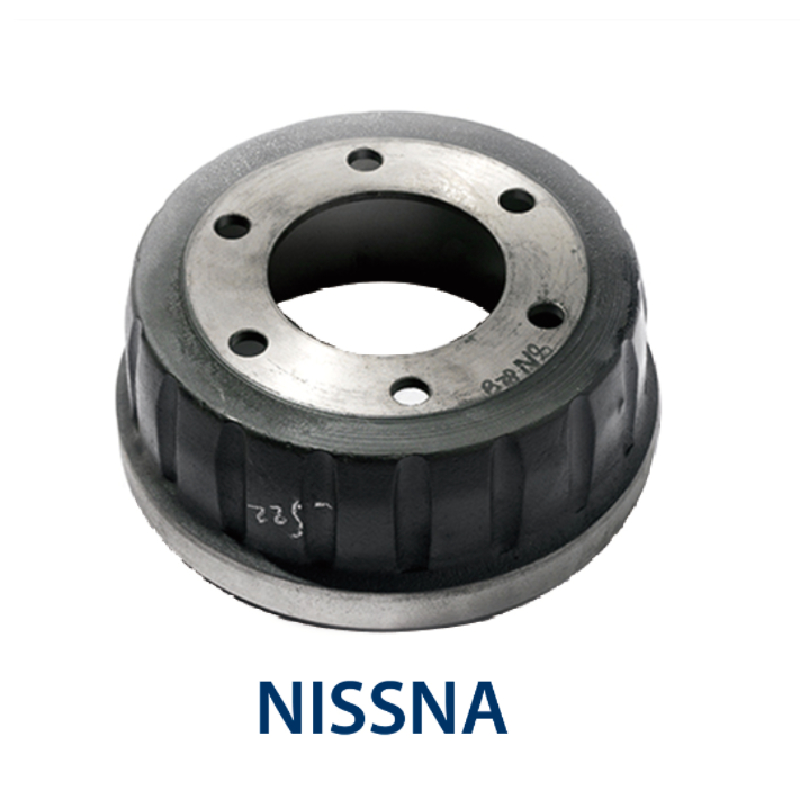Nov . 28, 2024 01:45 Back to list
Reasons Why Brake Drums Heat Up During Vehicle Operation and Their Effects
Should Brake Drums Get Hot?
Brake systems play a crucial role in vehicle safety, and understanding the functioning of components like brake drums is essential for maintaining that safety. Brake drums are part of a drum brake system, which is commonly found in vehicles, especially trucks and older cars. One common question arises should brake drums get hot during operation? The short answer is yes, but there are important nuances to consider.
How Brake Drums Work
Brakes operate by converting kinetic energy into thermal energy through friction. In drum brakes, the brake pedal activates the brake shoes, which press against the interior surface of the brake drum. This contact generates friction and brings the vehicle to a stop. As the friction increases, so does the temperature of the brake drums. Hence, it is normal for them to become hot during use. However, the degree of heat generated can indicate the effectiveness of the braking system as well as its overall health.
Normal Temperature Ranges
Typically, brake drums can reach temperatures ranging from 200°F to 500°F (93°C to 260°C) when in use. This temperature range is generally safe and indicates that the brakes are functioning correctly. Nevertheless, if the drums become excessively hot, reaching temperatures above 600°F (316°C), this may signify a problem. Overheating can lead to brake fade, where the brakes lose effectiveness due to the heat degrading the friction material.
Causes of Overheating
should brake drums get hot

Several factors can cause brake drums to overheat. Continuous, hard braking, such as when driving down steep hills, can generate excessive heat quickly. Inadequate ventilation around the brake drums can also contribute to overheating, as it prevents heat dissipation. Furthermore, worn or malfunctioning brake components, such as shoes, springs, and wheel cylinders, can lead to increased friction and heat generation.
Symptoms of Brake Issues
There are several signs of brake problems that drivers should be aware of. If you notice a burning smell, decreased braking performance, or a pulsating brake pedal, these could be indicators of overheating or other brake-related issues. The presence of audible noises like grinding or squealing can also be a sign that the brake components are worn down or failing. If any of these symptoms are present, it’s essential to have your brake system inspected immediately.
Preventative Measures
To prevent brake drums from overheating, regular maintenance is crucial. This includes checking the brake fluid level and quality, inspecting the brake components for wear, and ensuring that the brake system is correctly adjusted. Using quality brake components can also make a significant difference in performance and heat management. Additionally, driving habits play a role; avoiding sudden or excessive braking can help maintain lower temperatures in the brake system.
Conclusion
In summary, while it is normal for brake drums to get hot during operation, excessive heat can indicate underlying issues that require attention. Understanding how brake systems work and recognizing the signs of overheating can help maintain vehicle safety and performance. Regular maintenance and mindful driving practices can mitigate the risks associated with heated brake drums and ensure a safer driving experience. Always remember, when in doubt about your brake system, it's best to consult with a professional mechanic who can provide expert advice and services.
-
HINO Industrial Efficiency Solutions - ¡Ң���ຽ��е��������˾
NewsJul.13,2025
-
HINO Industrial Solutions - ¡Ң���ຽ��е��������˾ | Advanced Technology&Reliability
NewsJul.13,2025
-
HINO Industrial Efficiency-Jiangsu Hino Industrial|Productivity Optimization&Cost Reduction
NewsJul.12,2025
-
HINO-¡Ң���ຽ��е��������˾|Advanced Industrial Solutions&Energy Efficiency
NewsJul.12,2025
-
Premium Brake Drum Iveco – Durable Drum Brake Drum & Brake Shoe Solutions
NewsJul.08,2025
-
High-Performance Brake Drum Liza for Enhanced Safety Reliable Drum Brake Drum & Brake Shoe Solutions
NewsJul.08,2025
